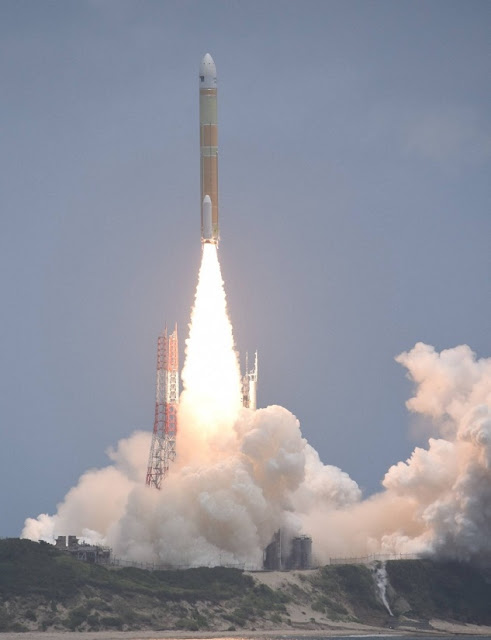In a piece of news I have to admit got by me with last week's atypical schedule is that Japan launched the first successful mission of their new H3 rocket on July 1. The mission was the third flight of the H3 and the first that the Japan Aerospace Exploration Agency (JAXA) declared to be a success. The H3 rocket launched the Daichi 4 satellite, also known as ALOS-4, with a synthetic aperture radar (SAR) for all-weather observations of Earth's surface.
“It was truly a perfect launch, a perfect 100 out of 100,” said Makoto Arita, the JAXA H3 project team manager.
You might remember that the first test flight of the H3 in March of '23 failed when the second stage malfunctioned and a $200 million Earth observation satellite was lost on the doomed rocket. A second test flight of the H3 rocket this past February was successful, and this time the launcher only carried small test payloads.
H3 is expected to become the workhorse for the Japanese space agency for the next decade. Despite no mention of reusability, JAXA is targeting flying six times per year, up from the cadence of three flights per year achieved by the H-IIA rocket, the vehicle the H3 will replace. There are two more H-IIA flights left to fly this year - the fiscal year in Japan runs through March 2025.
Japan views a stable and commercially competitive space transport capacity as essential not only for its space program but also for its national security needs.
Japan's new flagship H3 rocket is launched from Tanegashima Space Center in
Kagoshima Prefecture on Monday. Image Credit JIJI

Good for Japan. Having a launch capability so you can't get shut out by a once-friendly nation gives a country options.
ReplyDeleteKudos!
ReplyDeleteOnce those guys get their space legs under them be no stopping them, in fact they must, being an island civilization, they have no other options, the earth is simply too crowded for resources, and real-estate.
ReplyDeleteDon't forget that Japan's population isn't expanding. At the start of June they announced Japan just set a record for their lowest birth rate. For the eighth straight year. Lowest since they started measuring in 1899.
Deletehttps://thediplomat.com/2024/06/japans-birth-rate-falls-to-a-record-low-as-the-number-of-marriages-also-drops/
Being a true believer in an asteroid belt mining civilization, looking at it from the perspective in the resources needed to sustain life off mother earth, it is the only viable choice. Of course setting up and creating a viable self sustaining belt civilization there's some big hurdles first must be overcome. First of firsts is a propulsion system to get there with the people and resources to set up operations. Doesn't have to be necessarily fast but it does require pushing considerable relative payloads out there, second once there in force at least a decade till self sustaining life is developed. Third is financing such operations, with the serious caveat it will be decades before return on investment. And that for now, in this globalistic hedgemon situation running things, be a difficult thing to procure.
ReplyDeleteFor another thing, and only just saying, for now, theres something that does not want the human race to be free. "IT" is not going to easily let go. Just saying.
@ Anonymous:
Deletedo you, too, write a blog?
Ariane 6 just launched. So far so good.
ReplyDeleteKudos, JAXA!!
ReplyDeleteKeep up The Space Race!